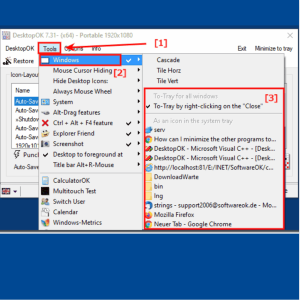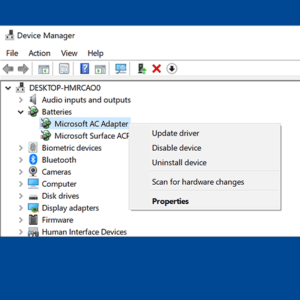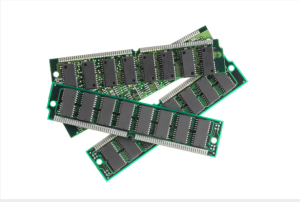So you’ve had your laptop for sometime now. You may notice that it’s probably not as responsive or as fast anymore. This is due to a lot of things like recent updates to programs requiring more power. And as software becomes more demanding, the way in which your PC reacts to these changes can have a big impact on its performance.
While you can might think that buying a new computer is the key, there are some improvements you can make that are more cost-effective and cost-efficient. These improvements, together with some upgrades, can help speed up your computer performance. There are some ways that you could get back that snappy performance or make your computer perform better. So how do you make your computer faster without breaking the bank? Read on.
Here are some ways on how to make your computer faster without breaking the bank:
1. Close system tray programs

Right-click the program’s icon in the system tray (next to the clock), and choose Close, Exit, or Disable. If this doesn’t work, you can temporarily disable background programs on Windows from Task Manager. The Windows Task Manager can close programs that the system tray cannot.
2. Stop programs running on startup
Other apps that automatically run on startup, including those in the tray, can slow down your computer. Some, such as antivirus software, you may wish to run, but others may be unneeded.
Right-click the taskbar and select Task Manager or hit Ctrl-Shift-Escape to launch. Head to the Startup tab and you’ll be able to view each item that runs on startup, along with its impact.
3. Update Windows, drivers, and apps

If you think you might have missed an update, you can always check. Go to Start and click Settings or the settings icon. Then go to Updates & Security > Windows Updates.
4. Find programs that eat up resources
Most of the time, it’s likely that a specific program is to blame if your computer suddenly becomes slower. You can go into your task manager and check what’s consuming your resources.
Select Task Manager by right-clicking on the taskbar. More information about the programs presently executing on your computer can be found by clicking More details. By default, it should display the Processes tab.
You can click each header to sort the list according to which applications are using the most of that particular resource. If you need to close something, try closing the actual application first. If it won’t close, come back to the Task Manager screen, right-click the application, and hit End task.
5. Delete unnecessary files
Make it a practice to delete files and folders once a week and clear the recycle bin afterwards to free up space. If you do this on a regular basis, you’ll be less likely to forget what’s in the files and folders, and you won’t be as afraid about accidentally deleting something vital.
TIP: Hard drives typically run at full speed until they reach about 90% capacity. So, if your space are almost used up and it’s above 90%, that’s most likely what’s slowing things down. The same goes with SSDs. It’s not a good idea to fill an SSD up to more than 75% of its capacity.
To uninstall a program, head over to Control Panel > Programs > Programs and Features.
8. Run a disk cleanup

Windows comes with a built-in tool for cleaning up junk that accumulates over time. To access the Disk Cleanup tool, go to Control Panel > System and Security > Administrative Tools, and select Disk Cleanup from the list.
Here, you can select the types of files you want to get rid of and click OK. Then click Clean up system files and choose any system files you want to remove.
9. Defragment your hard drive
You should defragment, or consolidate data on your hard disk, to keep your computer performing at its optimum. Defragmenting your hard disk enhances the performance of your computer and should be done on a regular basis. The default schedule is once a week, but if you feel there’s a problem, you can manually run it.
To begin, keep in mind that you only need to do this if your computer uses a mechanical Hard Disk Drive (HDD). A Solid State Drive (SSD) differs from a hard disk drive (HDD) in that it does not require any maintenance.
- Choose Start→Control Panel→System and Security. The Administrative Tools window appears.
- Click Defragment Your Hard Drive. The Disk Defragmenter dialog box appears.
- Click the Analyze Disk button.
- When the analysis is complete, click the Defragment Disk button.
- Click Close.
10. Upgrade to faster drive
A computer’s speed is determined by various factors, including the hard drive, CPU, RAM, and visual card. When copying large files or waiting for programs to load, a faster drive can help.
Consider replacing your laptop’s hard disk (HDD) with a solid state drive (SSD). SSDs employ flash memory to eliminate the moving parts found in HDDs, allowing the computer to find files faster. SSDs can speed up your ordinary chores by up to six times.
SSDs are more durable and energy-efficient in laptops. SSDs are used by the majority of laptop manufacturers because they are more durable, lower in weight, and consume less battery power than hard drives.
11. Upgrade system memory

The short-term memory section of your computer’s brain is known as random access memory, or RAM. Your computer’s RAM is used to temporarily store any data that it need right now or that it will need in the near future. That way, it won’t have to search through all of the data on your hard disk. To put it another way, computers store data in RAM for quick access.
As a result, upgrading your computer’s RAM is one approach to improve its speed and performance. The more RAM you have, the more fluid everything feels and runs. You’ll experience faster startup times, more browser tabs with no interruption, higher FPS (frames per second) when gaming, more freedom to multitask with different apps, and an all-around snappier experience.
References:
http://www.hp.com/us-en/shop/tech-takes/7-ways-to-improve-computer-performance
http://www.itpro.co.uk/laptops/26047/how-to-speed-up-a-laptop
http://www.dummies.com/computers/for-seniors-how-to-defragment-your-computer-hard-drive/
http://www.crucial.com/articles/pc-users/how-to-make-a-laptop-faster
http://www.avg.com/en/signal/how-to-upgrade-ram-pc
https://www.softwareok.com/?seite=faq-DesktopOK&faq=13
https://support.microsoft.com/en-us/windows/update-drivers-manually-in-windows-ec62f46c-ff14-c91d-eead-d7126dc1f7b6

